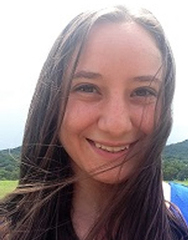Junior Faculty Spotlight: Allison Leich Hilbun

Each year, the CFT Newsletter highlights the work of our Junior Faculty Teaching Fellows. This month, Allison Leich Hilbun, Biological Sciences, talks about some of the most useful lessons she has gotten from the Fellowship.
Participation in the JFTF program has been exceedingly enlightening. I am excited about what I have learned regarding prior knowledge; although coming into a class knowing information about the subject can be beneficial for students, it can also be particularly detrimental due to misguided initial assumptions. I intend to implement strategies during the beginning of semesters to initially use terminology that will allow students to begin to build foundations detached from potentially harmful prior suppositions.
More specifically, I teach a seminar on the topic of collective intelligence in different classes of animals. It can be quite difficult to even begin to define what collective intelligence is; people disagree about whether there must be a large degree of emergent phenomenon or individual awareness to qualify as collective intelligence. Further, because intelligence is highly prized in society, especially in high achieving students, students generally come into the class with strong preconceived notions of what intelligence is and then use that to frame their perception of how collective intelligence may work, and how it should be quantified. This can be confusing and problematic in that collective intelligence should be distinguishable from the sum of the intelligent parts of the system. When asked to develop a quantification metric for collective intelligence, students often struggle to design a methodology that would specifically test for collective intelligence and not individual intelligence.
For example, collective intelligence evaluations for a group of birds based upon time to open a puzzle box, depending upon the specifics, would need to appropriately account for task distribution, communication, random chance, and inter-bird intelligence variability. Also, there would be a need to compare the predicted group improvement from summed individual contributions with the empirical decrease of time, instead of just assuming the existence of true nascent group intelligence because being in a group seems to reduce the time to solve the puzzle. I perceive that initially discussing the topic in terms of group emergent phenomena will help the students conceptualize this dynamic differently, after which the term collective intelligence can be better evaluated. For instance, we will watch video clips of animal behavior and discuss our perceptions on whether emergent phenomena have manifested, agree as a group on a quantification method, discuss how we would define individual intelligence, and then go back to each animal and debate whether the individual intelligence of those creatures influenced their remarkable group abilities.
In addition, I have enhanced my rubric writing capability and have increased my understanding of how student motivation relates to the degree to which students conceptualize how level of insight can be evaluated. A third topic that has been heavily influential is the notion of preparing the course curriculum with specific goals in mind for what I desire students to be able to accomplish by the end of the semester. I have begun writing these specific objectives on my syllabi and informing my students of these aspirations. As we progressed during the semester, I also more clearly explained to students how the activities that I implemented would directly relate to my overall class goals. I perceive that this has resulted in enhanced motivation in students, as they seek to reach the challenging yet engaging goals.

Leave a Response